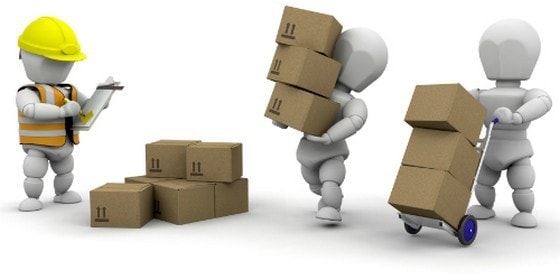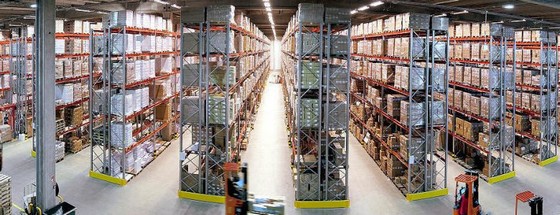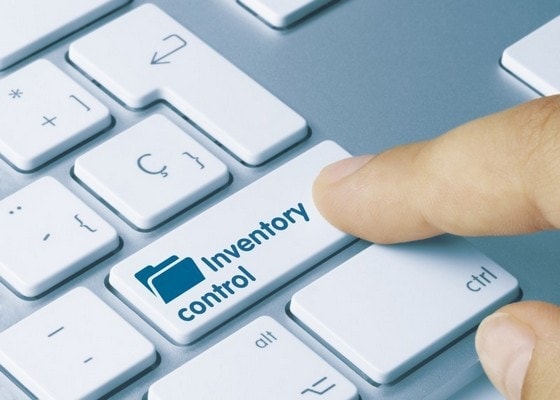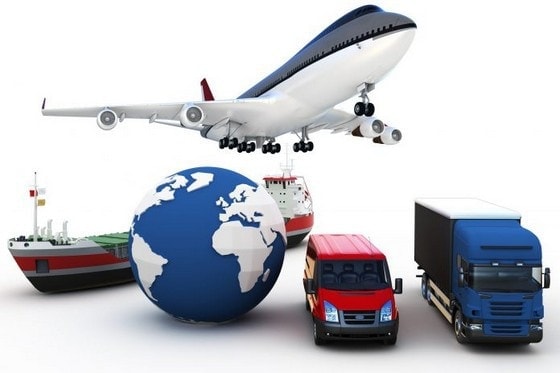Logistics is also known as Physical Distribution management. Logistics is an activity carried out by many different companies for the physical distribution of goods. FMCG, consumer durables, and many other industries regularly manufacture goods. These goods have to be transported to the distributors and dealers and lastly to the end consumer. Logistics is the means to transport the goods from the company to the middlemen or the end consumer.
However, Logistics does not mean “transport” only. There are many different logistics activities or functions of logistics which are used by a company.
For example – If you have to deliver a good from your warehouse to a dealer, then you need to adjust the inventory that you have in your warehouse (because goods are leaving). Similarly, you need to have entries that the goods have left from your warehouse and reached the dealer. In between, you also need to ensure that goods are handled in the appropriate manner and they reach in the desired condition to the dealer. If there are any returns from the dealer, they have to be accounted too.
From the above example, we can understand there are many logistics activities which have to be taken care of. 6 such functions of logistics are discussed in this article
Did you know the logistics industry is rapidly evolving?
Quick Statistics: According to the Council of Supply Chain Management Professionals, logistics costs amounted to approximately $1.64 trillion in the United States alone in 2019, representing about 7.6% of the national GDP. With the rise of e-commerce and global supply chains, logistics efficiency gains are crucial for businesses aiming to stay competitive.
Updated Industry Insights: Recent trends highlight the shift towards digital transformation in logistics. A survey by Deloitte indicates that 75% of supply chain executives expect to implement predictive analytics and AI for logistics optimization by 2025. This shift is not only enhancing efficiency but also improving customer satisfaction by providing real-time tracking and predictive delivery times.
Logistics activities or Functions of Logistics
1) Order processing
The Logistics activities start from the order processing which might be the work of the commercial department in an organization. The commercial department is the one who ensures that the payment terms and the delivery terms have been met and then processes the order from within the company.
Basically, the commercial team accepts the order from the customer and places the order to the warehouse. If the customer has given the payment, a commercial team makes the entry into the system and tells the warehouse that the customer has given an order of 10 units so the warehouse needs to deliver 10 units.
In many companies, the entry from commercial also deducts the inventory in the warehouse. So if the commercial team has given the go-ahead for a purchase order of 10 units, the available inventory will automatically be deducted by 10 units so that double ordering does not happen. This is an important step in logistics activities because any mistake in this step (wrong entries of quantity, delivery address etc) can affect the whole logistics process.
2) Materials handling
Material handling is the movement of goods within the warehouse. It involves handling the material in such a way that the warehouse is able to process orders efficiently. Although it may sound a mundane task, it is an important one and an ongoing activity in any warehouse.
For a small shop with 100 products, it is very easy to move one product from one place to another. But IF this small shop was not sure WHERE the products are kept, the shopkeeper will have to search for the order and the product every time he receives the order. He will have to search this in all the 100 products that he has and then he will have to move the other products so that he can give the ordered product to the customer.
Now multiply this scenario by 100 times. Warehouses of large companies are sometimes half a mile or more in size. Imagine the amount of material stored in the warehouse. If the warehouse manager does not know where the material is stored and how he is going to bring it to the dispatch center of the warehouse, he will be in big trouble and his productivity and efficiency will take a big hit. That is why materials handling is an important function of logistics.
Arranging material within the warehouse properly so as to allow easy movement and dispatch material is an important activity in logistics management. This becomes more important as the warehouse grows in size. Amazon, for example, uses the combination of robotics, AI, and humans for material handling. It is estimated that Amazon ships 16 lakh package a day. Which is equal to 70,000 packages every hour. Imagine the confusion if Amazon did not employ the best material handling equipment and strategies.
3) Warehousing
If we take the example of LG or Samsung, these are consumer durable companies which are present in multiple countries. Their manufacturing might be at one point, but the distribution is all across the world. Thus, warehousing plays a huge role and is one of the important Logistics activities.
The important point in warehousing is that the warehouse should be nearby to the dealer or the distributors’ place and it should facilitate the easy delivery of goods. If there was a product which was from a branded company, but which takes 1 week to deliver, then this product might not move as much in the market as another product which is taking 2 days to deliver even though it is unbranded.
Thus, it makes sense for the branded company to have a closer warehouse so that can immediately deliver the goods. Once a brand establishes itself in a new territory, the first thing it does is to lease a new warehouse so that It can be closer to the territory and closer to the end customers.
The location of warehouses also reduces the pressure on mother warehouse (large warehouses which stock most of the products). When there is a peak in demand or if there is a drop in production, these warehouses can take the pressure of deliveries and they can become interdependent to ensure delivery of goods to consumers.
4) Inventory control
If a firm has 100 units of a product in stock, but the demand is only of 10 units, then the company has uselessly invested in 90 units. This is money which can be used as a working capital and it is money on which banks are applying interest.
On the other hand, another firm had a demand of 500 units, but they have manufactured only 200 units thinking that demand will be less. Now they have lost the orders which is an opportunity cost. The perfect firm will be one, which has manufactured 100 units, knows there will be 50 units of demand and is ready even if demand doubles. But they are continuously monitoring the demand and are ready for it without investing much in manufacturing.
With the above example, you understood the importance of Inventory control in Logistics activities. Inventory management is one of the most important functions of logistics especially after the adoption of various production techniques such as Just in time manufacturing, lean manufacturing or other manufacturing processes where the cost of inventory management is brought down.
5) Transportation
Now we come to one of the major logistics activities which is one of the most resources heavy and revenue heavy segment of logistics. There is a single reason that transportation is costly – Fuel. Be it petrol, Diesel or gas, fuel is costly, and it is mostly consumed in transportation activities. This is why companies spend lakhs to control the transportation expenses because it is one of the highest variable expense to any company.
Transportation involves the physical delivery of goods from the company to the distributor or dealer and from the dealer to the end customer. Generally, companies are involved only till the point delivery happens to the distributor or the dealer. The distributor is then responsible for the delivery to the end customer. However, transportation is a cost to the dealer as well and reduces his profit – due to which the company has to give higher profits to the dealer – to negate his costs.
The better the warehousing and the inventory management of a company, the lower is the transportation cost for the company. Economies of scale play a major role in the cost-effectiveness of transportation. FMCG adopted “breaking the bulk” method to reduce the cost of transportation and also to improve functions of logistics as a whole.
6) Packaging
There are two types of packaging – One which the customer sees on the shelf of supermarkets or hypermarkets where the package appears attractive and makes the customer buy the packages. The other is transport packaging where the products are packed in bulk so as to avoid any breakage or spillage and yet allow them to transfer huge volumes of the product safely from one place to another.
Packaging the product is a responsibility of the logistics team because otherwise the product will reach damaged to the end customer and this is a huge cost to the company. This is why, especially in export markets, a huge amount is spent in the packaging of the product. The packaging may cost only 1-2% of the value of the product, but if it is not right during transportation, it will result in 100% cost due to the damage and loss of the product.
The above were all the functions of logistics and the logistics activities which have to be taken care of in any major company. Management looks at logistics in two different ways.
Here is a Video on Logistics and Supply Chain Management
In one way, management looks at logistics as interdependent systems. So transportation may be one system and warehousing may be other. In this case, the cost of systems as individuals is controlled and they are calculated as individual costs in the books of accounts.
In other management styles, possibly where the products are large and robust and not small units, the management considers logistics as a whole and it is given its own individual header in the books of accounts. The different logistics activities are clubbed together as one cost and the cost is brought down as the whole.
Liked this post? Check out the complete series on Distribution






purchasing and supply
thanks good explanation
Nice points and well explained too,thanks.
well explanation thanks
On point…good work done
Thanks good explanation
Well explain and straight to the point